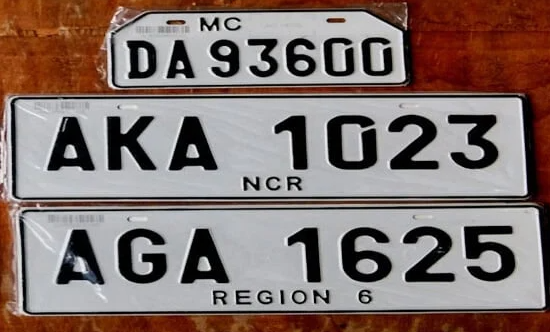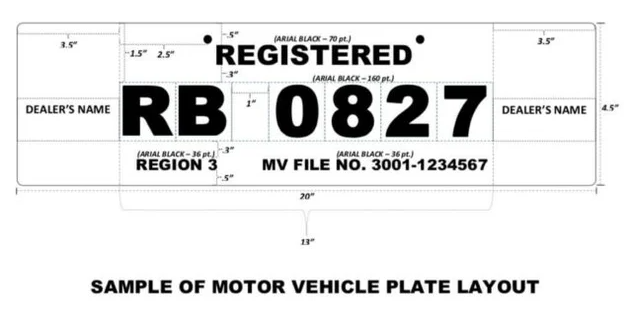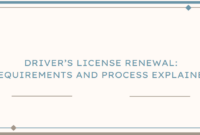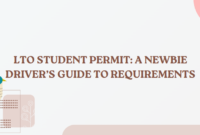In the fast-paced world of transportation, having an LTO plate number is more than just a formality-it’s a key requirement for legally driving on public roads. Every vehicle, from motorcycles to cars, must have a registered plate that verifies its compliance with national road laws. Yet, many drivers find themselves anxiously waiting, wondering when their LTO plate number will be available for claiming. With the growing backlog, staying informed on the process is essential to avoid road complications and penalties.
This LTO Plate Number Guide aims to simplify the steps needed to check if your plate is ready for collection. Whether you’re dealing with a new vehicle purchase or a replacement plate, navigating the LTO’s system can feel overwhelming. But with a few easy methods and resources, you can stay up-to-date and ensure your vehicle remains road-ready.

An LTO plate number serves as a vehicle’s official identifier, proving its registration, compliance with road laws, and its legitimacy on the road. Yet, many motorists are still waiting for the issuance of their LTO plate number. As more vehicles hit the road, the Land Transportation Office (LTO) seems overwhelmed, unable to keep up with the growing demand.
Understandably, this has led to frustrations among vehicle owners who have been waiting for months, or even years, for their plates. The “No Registration, No Travel” policy allows authorities to penalize cars without plates, creating an urgency for faster plate releases. Motorists are naturally anxious to avoid potential fines and legal issues.
Why is an LTO Plate Number Important?
Goldpriceph.com – An LTO plate number is essential for any car or motorcycle, as it acts as the vehicle’s official identification, alongside the OR (Official Receipt) and CR (Certificate of Registration). This government-issued plate is mounted on the front and rear bumpers, signifying that the vehicle is properly registered and authorized to be driven on public roads. It not only validates the vehicle’s legitimacy but also ensures that it meets all legal requirements for road use.
License plates play a crucial role in helping law enforcement maintain order on the roads. They enable authorities to monitor traffic violations and identify offenders quickly, making it easier to enforce laws and hold violators accountable. The presence of a clearly visible plate number reassures both law enforcement and the public that vehicles can be easily traced if necessary.

Without a proper plate number, law enforcers are forced to stop vehicles to verify their registration, leading to unnecessary delays and potential issues for both drivers and authorities. The absence of visible identification complicates enforcement and disrupts the smooth flow of traffic, highlighting the importance of every vehicle displaying its assigned plate at all times.
The Timeline of LTO Plate Number Delays
- The LTO, together with the Department of Transportation (DOTr), initiated the Motor Vehicle License Plate Standardization Program. A manufacturing contract was awarded to Knieriem BV Goes and Power Plates Development Concept Inc.
- The Commission on Audit (COA) halted further payments to suppliers due to issues with advance payments, which led to an 11 million plate backlog.
- A Supreme Court temporary restraining order (TRO) prevented the release of 700,000 plates after customs duties were unpaid by the supplier.
- The TRO was lifted, and the LTO set up its own production plant, which began producing plates at a rate of 22,400 per day.
- Despite continuous efforts, by September, an 11.5 million backlog remained. The LTO ramped up production in and aimed to cover 90% of the backlog by year’s end. However, as of mid-year, many plates remained undelivered.
Checking LTO Plate Number Availability
To check if your LTO plate number is ready, several options are available:
- Text Message: Send a text with the format “LTOVEHICLE<space>plate number” to 2600. You’ll receive an automatic reply with your vehicle’s details.
- Online Portal: Visit LTO’s web portal, though it may still be down.
- Dealer Coordination: Contact the dealer where you bought your car, as they might provide updates on your plate number status.
- LTO Hotline: Call the LTO Plate Unit hotline at (02) 8922-9063 local 225.
Claiming and Replacing LTO Plates
To claim your LTO plate, you’ll need to bring the CR, OR, and a valid ID to your respective LTO branch or district office. If the plate number isn’t on your CR, the LTO will issue a certification that records your new plate number in their system.
For plate replacements, follow these steps:
- File an affidavit of loss or mutilation at the LTO office.
- Submit your OR/CR, along with a PNP-Highway Patrol Group clearance.
- Pay the necessary fees, obtain a temporary authorization to use an improvised plate, and await the new plate.
LTO License Plate Guidelines and Laws

- Temporary Plate Specifications: Vehicles with pending plate releases must display a standardized temporary plate that includes the conduction sticker number and MV file number.
- Motorcycle Plate Rules: Republic Act 11235 (the “Doble Plaka Law”) mandates bigger, more readable plates to deter crimes involving motorcycles. Motorcycles must use metal rear plates and decal front plates, adhering to strict size and color specifications.
- Penalties: Violations of registration, including tampered or missing plates, can lead to fines between ₱20,000 and ₱100,000, with severe offenses potentially leading to imprisonment.
Vanity Plates and Fixers
Customizing your vehicle’s license plate may seem enticing, but vanity plates come with a hefty price tag, ranging between ₱15,000 to ₱35,000. While these plates allow for a personal touch, their high cost might outweigh the benefits, especially given the ongoing delays in plate issuance. For many, this expense can be difficult to justify amid the more pressing concerns surrounding the availability of standard plates. Additionally, the LTO strictly warns motorists against using unauthorized commemorative plates. Though they may hold sentimental value, these plates are not legally recognized and can result in a ₱5,000 fine if used on public roads.
The LTO is actively cracking down on these unapproved plates to ensure that all vehicles display proper identification. Moreover, the LTO strongly discourages vehicle owners from seeking out fixers who claim they can expedite the process of obtaining plates for a fee. Engaging with these individuals not only promotes corruption but also puts motorists at risk of fraudulent activity. Instead, the LTO urges the public to follow official procedures to avoid unnecessary penalties and complications.
Conclusion
The delay in the release of LTO license plates has been an ongoing issue, with efforts to streamline the process failing to meet the growing demand. Despite increased production capacity, the backlog of plates remains a significant problem, leaving many vehicle owners waiting for extended periods. As the LTO continues to work on resolving the issue, motorists must stay updated, exercise patience, and adjust their expectations accordingly.
For those purchasing a new vehicle, it is essential to discuss the registration process with the dealer to understand the expected wait time for the license plate. Regularly checking the status of your plate through available channels is crucial to avoid potential fines or complications on the road.





